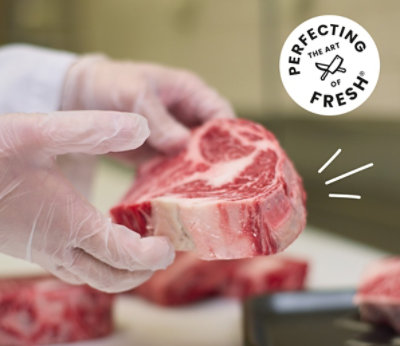Welcome back!
You're currently shopping with your default address:

With years of experience and passion for the craft, our in-store butchers help ensure you get the perfect cut of meat for every occasion, from Friday night dates or sizzling summer barbecues to weeknight dinners and impressive holiday feasts.
Four ways your in-store butcher can make any meal more special:
1. Custom cuts: Need a specific size or thickness for your recipe? Our butchers are happy to customize your cuts to fit your needs.
2. Cooking confidence: Spot a delicious looking cut you've never tried? Our butchers can share tips, tricks and ideas to help you make the most of your selection.
3. Recipe recommendations: Need dinner inspiration? Our butchers are recipe rockstars and marinade masters. Explore our selection of pre-seasoned meats or ask for personalized recipe suggestions.
4. Holiday help: Hosting a holiday? Our butchers are your secret weapon for a delicious, stress-free feast. They can help you calculate how much meat you'll need to feed your crew, plus offer prep tips to take your meal to the next level.
Whatever you need, our passionate pros are happy to help! Stop by your local Star Market today to see how we're perfecting the art of fresh.